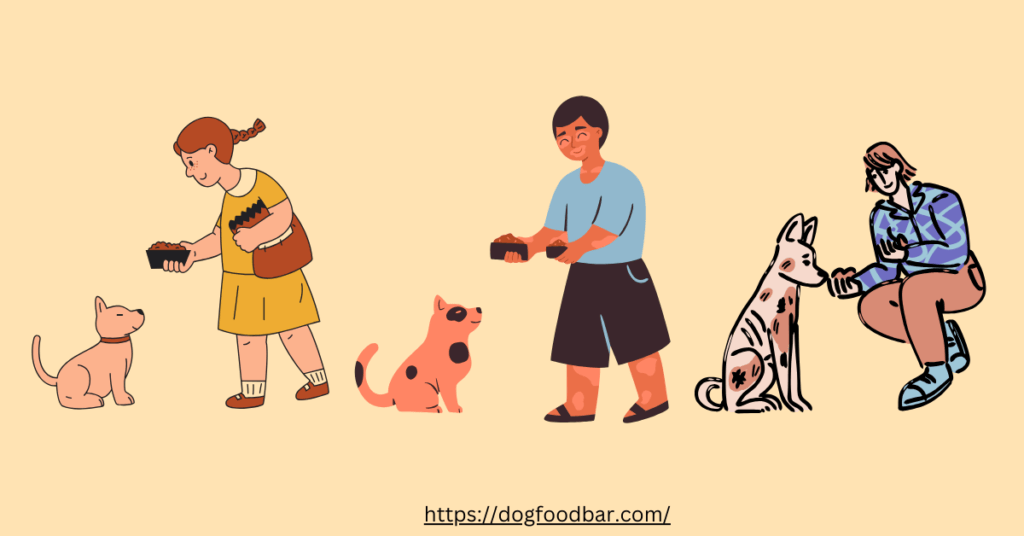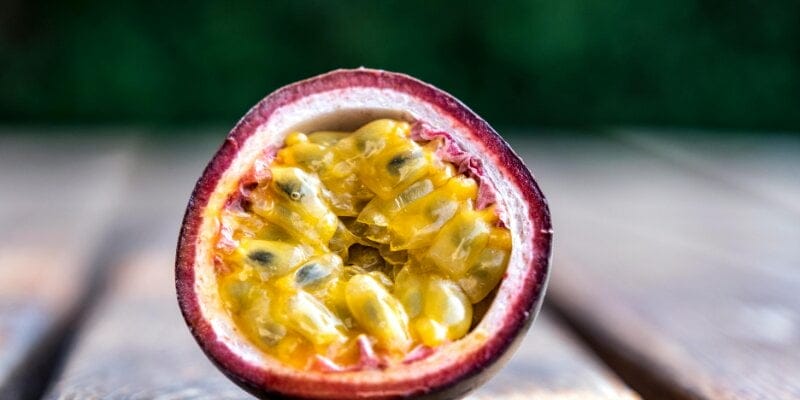How Much To Feed A Labradoodle Puppy

INTRODUCTION
Embarking on the journey of raising a Labradoodle puppy is an exciting venture, filled with boundless energy and undeniable cuteness. As you witness your furry friend grow, the question of “How much to feed a Labradoodle puppy?” is likely to arise. Ensuring the right balance of nutrition is key to their well-being, and this blog aims to guide you through the intricacies of tailoring their diet to meet their unique needs.
How much food to give a labradoodle puppy
Understanding Labradoodle Dynamics
Labradoodles, born from the union of a Labrador Retriever and a Poodle, come in a range of sizes, each requiring a customized approach to feeding. These bundles of fur can vary from miniatures to standards, influencing the amount and type of nutrients they need for optimal growth.
Age Matters How much to feed a labradoodle puppy
Just like humans, Labradoodle puppies have different nutritional requirements at various stages of their development. A pup’s diet should evolve alongside their growth, with adjustments to accommodate their changing needs. The transition from puppyhood to adolescence, and eventually adulthood, necessitates a mindful reassessment of their food intake.
Size Considerations
The size of your Labradoodle puppy is a significant factor in determining their nutritional needs to give “How much to feed a labradoodle puppy”. Smaller varieties may require more frequent, smaller meals, while larger ones might benefit from a structured feeding schedule to manage potential weight issues. Tailoring portion sizes to your pup’s size is crucial for maintaining a healthy body condition.
Balancing Act – Activity Level
Labradoodles are known for their playful and energetic nature. Consider your pup’s activity level when determining the amount of food they require. More active puppies may burn calories faster and need a slightly higher calorie intake to support their vitality.
Quality over Quantity
While quantity is essential, the quality of the food you choose for your Labradoodle puppy is equally crucial. Opt for high-quality, breed-specific puppy food that provides the right balance of protein, fats, vitamins, and minerals. Consult with your veterinarian to ensure you’re meeting your pup’s specific dietary requirements.
Monitoring and Adjusting
Regular monitoring of your Labradoodle puppy’s weight, body condition, and overall health is key to adjusting their diet as needed “How much food to feed labradoodle puppy”. If you notice changes in weight, energy levels, or coat condition, it might be time to revisit and possibly modify their feeding plan.

Dry Dog Food for Labradoodles
Dry dog food, also known as kibble, is renowned for its convenience and balanced nutrition. Designed to meet the dietary needs of various dog breeds, including the unique Labradoodle, it typically contains a mix of proteins, carbohydrates, fats, vitamins, and minerals. This comprehensive nutritional profile supports your Labradoodle’s overall health and well-being.
Tailoring to Labradoodle Needs:
Labradoodles, being a crossbreed between Labrador Retrievers and Poodles, come in different sizes, each requiring a specific approach to nutrition. When selecting dry dog food, opt for a formula designed for medium to large breeds to ensure it accommodates your Labradoodle’s size and energy levels. Look for options that feature high-quality protein sources and essential fatty acids for their distinctive coat.
Dental Health Benefits:
The crunchy texture of dry dog food offers more than just a satisfying chew. It can contribute to maintaining your Labradoodle’s dental health by reducing plaque and tartar buildup. The act of chewing on kibble helps promote healthy gums and teeth, contributing to a happier and healthier pup.
Convenience for Busy Lifestyles:
Dry dog food’s convenience extends beyond its nutritional benefits. It’s easy to store, has a longer shelf life, and simplifies portion control. This makes it an ideal choice for pet parents with busy schedules, offering a hassle-free way to provide their Labradoodle with the nutrition they need.
Reading Labels with Precision:
Not all dry dog foods are created equal, so it’s essential to read labels with precision. Look for options that list a high-quality protein source as the first ingredient, avoid unnecessary fillers, and check for added vitamins and minerals. If your Labradoodle has specific dietary needs or allergies, consult with your veterinarian to find a suitable option.
Transitioning Gradually:
When introducing a new dry dog food to your Labradoodle, do so gradually to avoid digestive upset. Mix a small amount of the new food with their current one, gradually increasing the proportion over several days. This gradual transition allows your pup’s digestive system to adjust to the new diet
Feeding a Labradoodle Puppy Wet Food
Wet food, with its higher moisture content, provides hydration along with essential nutrients, making it an appealing option for Labradoodle puppies. The soft texture is often gentler on their developing teeth and can be an excellent choice for picky eaters or those with dental sensitivities. When incorporating wet food into your Labradoodle puppy’s diet, it’s important to consider portion sizes and nutritional balance, ensuring they receive the right mix of proteins, fats, and vitamins for their growing bodies. As with any dietary change, a gradual transition is recommended to prevent digestive issues. Experimenting with wet food can turn mealtime into a delightful experience for your Labradoodle puppy, contributing to their overall health and satisfaction.
Canned Dog Food for Labradoodles
Canned dog food opens up a world of possibilities for Labradoodle owners seeking a delectable and nutritious option for their canine companions. With its palatable nature, nutrient-dense formulas, and variety to appease picky eaters, canned dog food adds a flavorful dimension to your Labradoodle’s mealtime routine. By navigating portion control and transitioning with care, you can ensure that your Labradoodle enjoys the benefits of canned delights while maintaining a healthy and happy lifestyle.

How much should a labradoodle puppy eat
feeding chart by age
| Age | Daily Feeding Guide |
| 8 weeks – 4 months | 3-4 meals per day, 1/2 to 1 cup per meal. Choose a high-quality puppy food rich in protein and nutrients. Adjust portions based on your puppy’s weight and activity level. |
| 4-6 months | 3 meals per day, 1/2 to 1 1/2 cups per meal. Monitor your Labradoodle’s growth rate and adjust portions accordingly. Transition to a larger kibble size suitable for growing teeth. |
| 6-12 months | 2 meals per day, 1 1/2 to 2 1/2 cups per meal. Continue with a balanced puppy formula, gradually transitioning to adult dog food around the 12-month mark. |
| 1-2 years | 2 meals per day, 1 1/2 to 3 cups per meal. Switch to a high-quality adult dog food with appropriate protein and fat levels. Monitor weight and adjust portions based on activity level. |
| 2+ years | 1-2 meals per day, 1 1/2 to 3 cups per meal. Adjust portions based on your Labradoodle’s weight, activity level, and overall health. Consideration for senior dog formulas may begin around 7 years old. |
Note: Always consult with your veterinarian to tailor the feeding chart to your Labradoodle’s specific needs, taking into account factors such as size, metabolism, and any health conditions. Keep in mind that individual dogs may require adjustments to these general guidelines.
Conclusion
“How much to feed a Labradoodle puppy” is a dynamic process that requires attention to detail and a commitment to adapting as they grow. By understanding the interplay between their age, size, activity level, and nutritional needs, you can embark on a journey of responsible puppy parenting, ensuring your Labradoodle thrives in every wag-worthy moment. Remember, a well-nourished puppy is a happy and healthy one.
FAQs
What is the best diet for a Labradoodle puppy?
The best diet for a Labradoodle puppy includes a balanced puppy-specific formula with high-quality proteins, fats, vitamins, and minerals. Choose a reputable brand, and consult with your veterinarian to tailor the diet to your puppy’s specific needs.
Why is my Labradoodle puppy always hungry?
Labradoodle puppies are often energetic and growing rapidly, leading to increased metabolism and, consequently, a hearty appetite. Ensure you’re feeding them appropriately sized and nutritious meals, and consult your vet if concerns persist.
How much should my Labradoodle puppy weigh?
Labradoodle puppy weight varies, but as a general guideline, a healthy weight range for a Labradoodle puppy can be estimated based on breed standards. Consult your veterinarian to assess your puppy’s individual growth and weight requirements.
How much should a Labradoodle puppy eat a day?
The daily food intake for a Labradoodle puppy depends on factors like age, size, and activity level. Refer to a feeding chart based on your puppy’s age and adjust portions accordingly, keeping in mind the importance of gradual transitions.
Best food for a mini Labradoodle puppy?
Opt for high-quality puppy food suitable for smaller breeds. Ensure the formula addresses the specific needs of mini Labradoodles, focusing on their size, energy levels, and potential health concerns.
How often to feed a Labradoodle puppy?
Labradoodle puppies usually benefit from 3 to 4 meals per day during their early months, gradually transitioning to 2 meals a day as they mature. Consistency in feeding times helps establish a routine.
What foods can Labradoodles not eat?
Labradoodles should avoid foods toxic to dogs, such as chocolate, onions, garlic, grapes, and certain artificial sweeteners. Consult your vet for a comprehensive list and be cautious about sharing human food.
What is the ideal weight for a mini Labradoodle?
The ideal weight for a mini Labradoodle varies, but a healthy range is typically 15-25 pounds. Regular veterinary check-ups can help monitor and maintain your mini Labradoodle’s optimal weight.
How do you take care of a mini Labradoodle puppy?
Taking care of a mini Labradoodle puppy involves a balanced diet, regular exercise, grooming, and consistent veterinary check-ups. Provide mental stimulation, socialization, and a loving environment to ensure their overall well-being
WRITTEN BY ANAM AHMED






